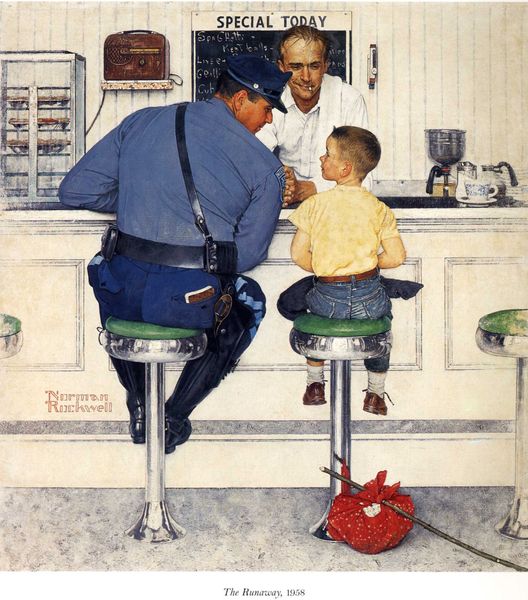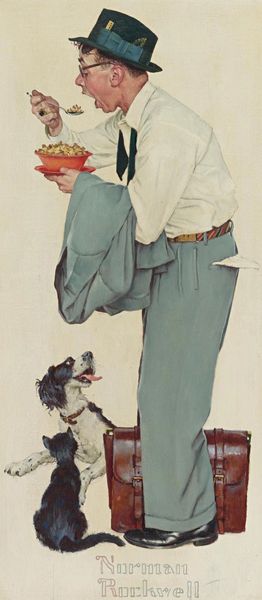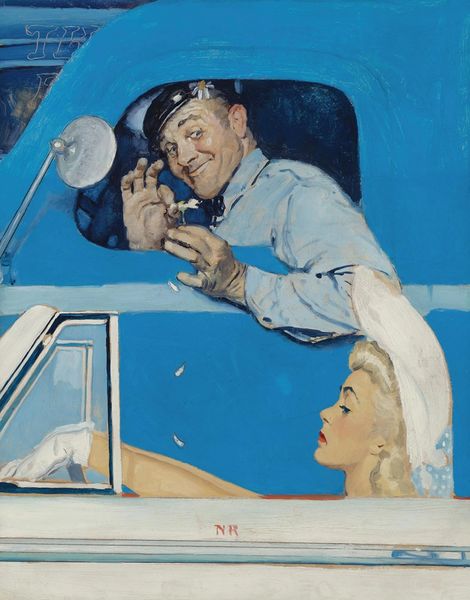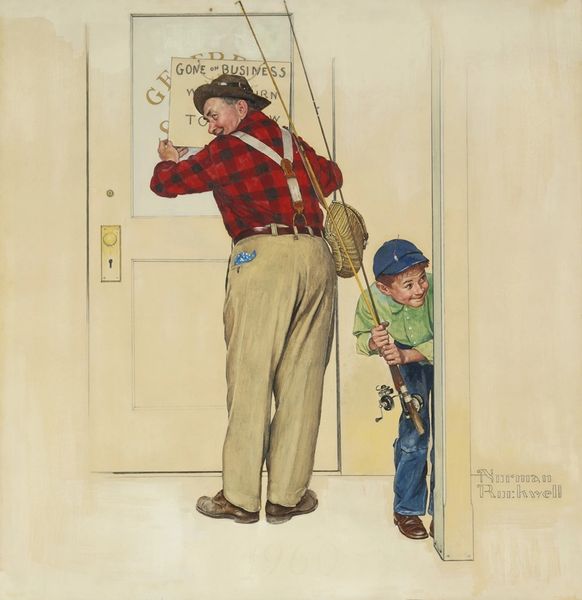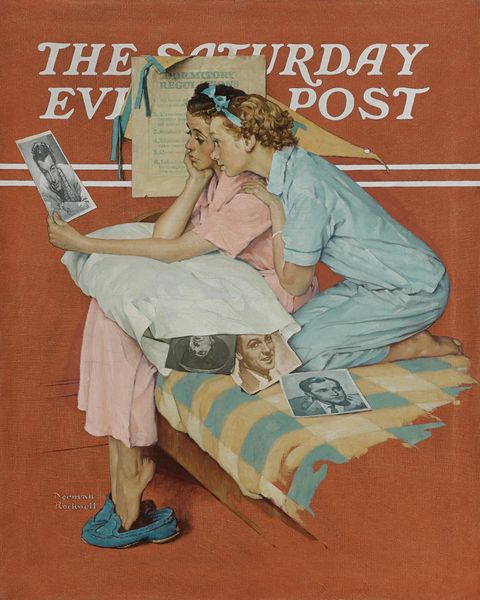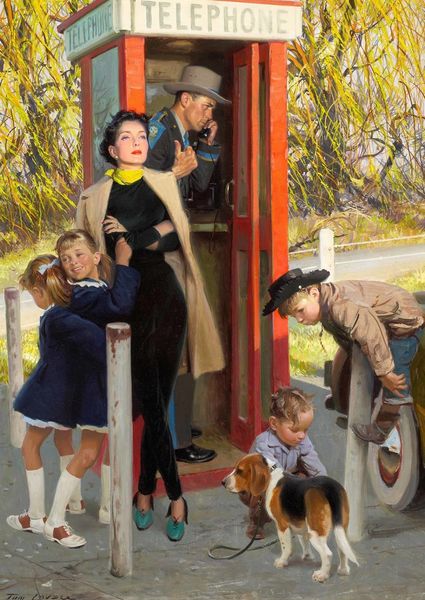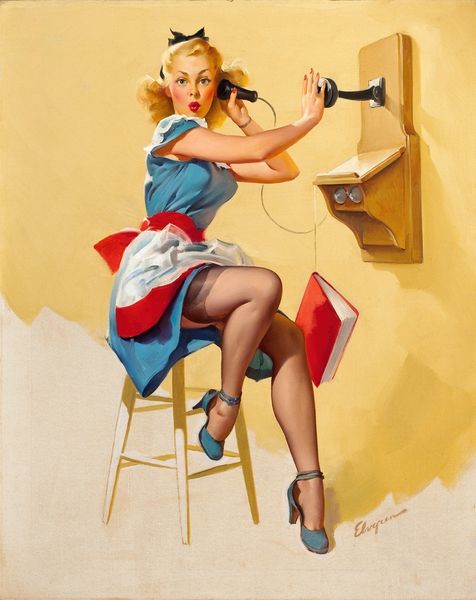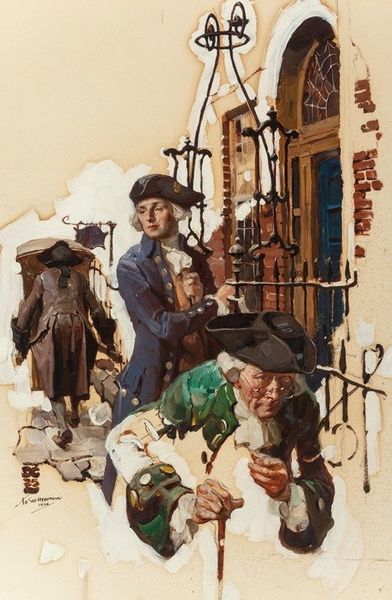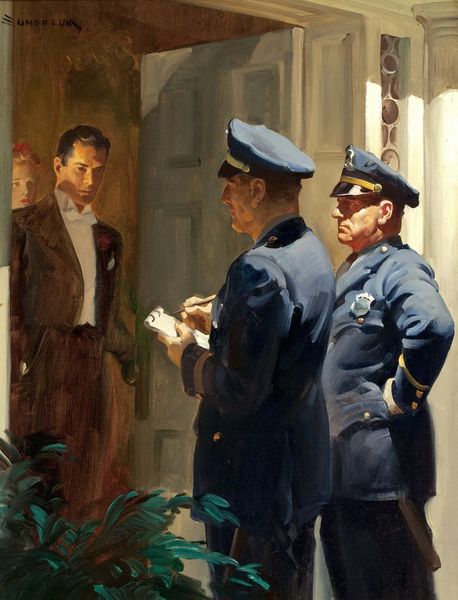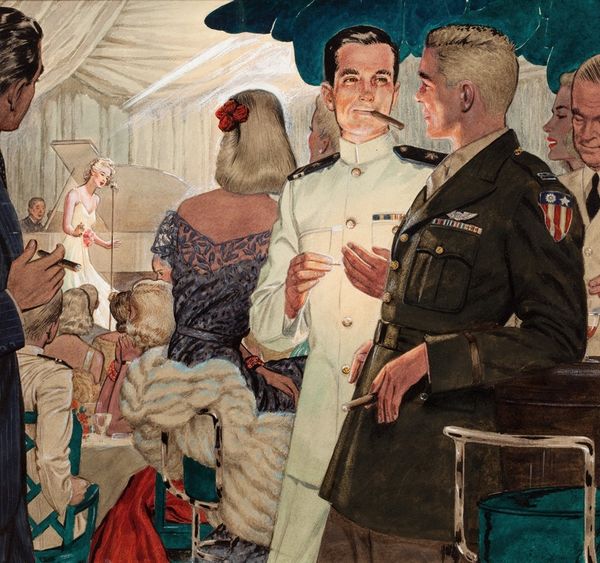
painting, oil-paint
#
portrait
#
painting
#
oil-paint
#
oil painting
#
painting art
#
genre-painting
#
academic-art
#
realism
Copyright: Modern Artists: Artvee
Editor: This is Norman Rockwell's "Two Plumbers" from 1951, done in oil. The scene is pretty funny—you have these two blue-collar guys amidst all this fancy, frilly stuff in what looks like a powder room. What do you see in it? Curator: I see a commentary on class and labor, plainly illustrated. Consider the materiality: Rockwell, who made his name illustrating the lives of working class people, here contrasts the rough tools of the plumbers with the delicate, manufactured goods on display in the background. He meticulously depicts their worn overalls, each tool a testament to their trade, next to perfume bottles and frilly curtains produced for mass consumption. Editor: So it's less about the people and more about... the stuff around them? Curator: Not entirely, but certainly the painting asks us to consider how different materials signify different social positions. Who produces what, and for whom? The labor involved in creating a wrench versus a bottle of perfume are vastly different. The plumbers' work is physical, immediate, while the perfume represents a longer chain of industrial production. Editor: That makes a lot of sense. The tools versus the perfume, the labor involved in making them. Did people pick up on that when it was first shown? Curator: Possibly. But also keep in mind Rockwell worked often in the service of illustrating national identity and its ideals for publications. Think of *The Saturday Evening Post* covers. He walked a fine line presenting aspects of social critique in this framework. It invites us to question traditional ideas about skill and status and even the divide between fine art and what some may see as mere illustration, a kind of service labor. Editor: I hadn't thought about it that way. So much more than just a funny scene. Curator: Exactly. The piece underscores how seemingly disparate objects can reveal much about a society’s values and the labor that underpins those values. We are challenged to reconsider our understanding of both material and social hierarchies.
Comments
No comments
Be the first to comment and join the conversation on the ultimate creative platform.
